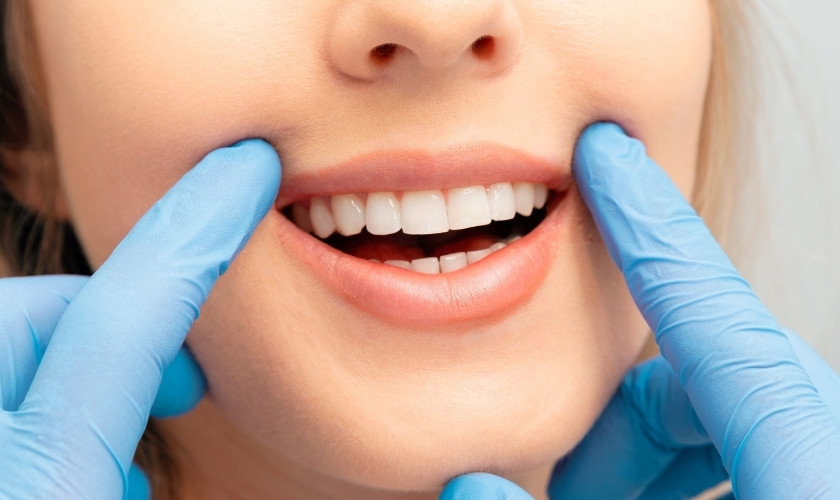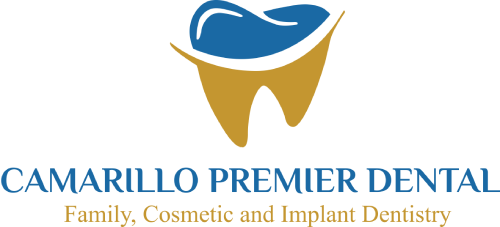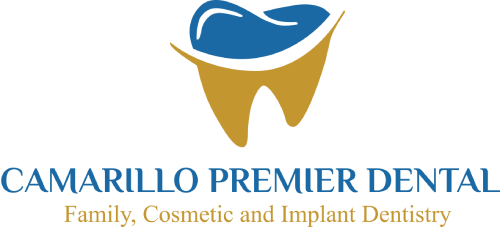After-Work Appointments For New Patients Now Available Until 8pm!

A bright smile makes a lasting impression. Keeping teeth white and healthy requires more than just brushing. A proper oral care routine helps prevent stains, cavities, and gum problems. It also boosts confidence and freshens breath.
With so many products available, choosing the right routine can feel overwhelming. The good news? A few simple habits can make a big difference. This guide will cover the best daily practices to maintain a dazzling smile. From brushing and flossing to diet choices and professional care, every step plays a role. Follow these steps for a healthier mouth and whiter teeth that last.
1. Brushing the Right Way
Brushing is the foundation of oral care. Doing it correctly prevents plaque buildup and keeps stains away.
- Use a soft-bristled toothbrush – Hard bristles can wear down enamel and irritate gums. Soft bristles clean effectively without damage.
- Brush for two minutes – Short brushing sessions leave plaque behind. A full two minutes ensures thorough cleaning.
- Move the brush in small circular motions – This technique removes plaque better than back-and-forth scrubbing.
- Don’t forget your tongue – Bacteria on the tongue cause bad breath and affect oral health. Brushing or using a tongue scraper keeps the mouth fresher.
- Replace your toothbrush every three months – Old bristles lose their effectiveness, leading to poor cleaning.
2. Choosing the Right Toothpaste
Not all toothpaste is the same. Some focus on whitening, while others help with sensitivity or gum health.
- Fluoride is essential – It strengthens enamel and fights cavities. Most dentists recommend fluoride toothpaste for daily use.
- Whitening toothpaste removes surface stains – These products contain mild abrasives that polish teeth without harming the enamel.
- Avoid harsh chemicals – Some whitening agents cause sensitivity. Look for gentle formulas with natural whitening ingredients like baking soda.
- Use the right amount – A pea-sized amount is enough for adults. Using too much can lead to excessive foam, making it harder to brush properly.
3. The Importance of Flossing
Flossing reaches areas a toothbrush can’t. It removes food particles and plaque from between teeth.
- Floss once a day – Doing it before bed prevents plaque buildup overnight.
- Use gentle movements – Forcing floss between teeth can harm gums. Slide it carefully along each side of the tooth.
- Try different types – Waxed floss, water flossers, and floss picks all help clean hard-to-reach spots.
- Don’t skip it – Even with regular brushing, plaque builds up between teeth. Flossing is essential for a healthy mouth.
4. Mouthwash for Extra Protection
Mouthwash isn’t just for fresh breath. It helps kill bacteria and strengthens enamel.
- Use an alcohol-free formula – Alcohol can dry out the mouth, leading to bad breath.
- Look for fluoride mouthwash – This strengthens teeth and prevents decay.
- Swish for at least 30 seconds – Shorter times won’t allow the ingredients to work effectively.
- Don’t rinse with water afterward – This washes away the protective layer left by the mouthwash.
5. Watching Your Diet for Whiter Teeth
Food and drinks play a huge role in tooth color. Some foods stain teeth, while others help keep them white.
- Avoid dark-colored drinks – Coffee, tea, and red wine stain enamel over time. Using a straw reduces contact with teeth.
- Limit sugary foods – Sugar feeds bacteria, leading to plaque buildup and yellowing.
- Eat crunchy fruits and vegetables – Apples, carrots, and celery help clean teeth naturally.
- Drink plenty of water – Water washes away food particles and reduces staining.
6. The Role of Professional Cleanings
Even with a great routine, professional care is essential. Dentists remove deep stains and plaque that daily brushing can’t.
- Visit your dentist twice a year – Regular cleanings prevent plaque buildup and detect problems early.
- Consider professional whitening – If teeth have deep stains, teeth whitening treatments at a dental office provide noticeable results.
- Ask about fluoride treatments – These strengthen enamel and reduce the risk of cavities.
7. Daily Habits for a Brighter Smile
Small habits make a big difference in keeping teeth white.
- Brush after meals when possible – Removing food particles quickly prevents stains.
- Chew sugar-free gum – This stimulates saliva production, which helps wash away acids.
- Don’t smoke or use tobacco – These cause heavy stains and damage oral health.
- Use a whitening pen for touch-ups – These are convenient for maintaining brightness between professional treatments.
8. Protecting Enamel for Lasting Whiteness
Strong enamel keeps teeth looking white and healthy. Protecting it should be a priority.
- Avoid acidic foods and drinks – Citrus, soda, and vinegar-based foods weaken enamel.
- Use a straw for acidic drinks – This minimizes direct contact with teeth.
- Wait 30 minutes before brushing after acidic foods – Brushing immediately can spread the acid, wearing down enamel.
- Don’t grind your teeth – Grinding causes enamel loss. A mouthguard helps protect teeth at night.
9. Natural Ways to Whiten Teeth
Some simple, natural methods can help maintain a whiter smile.
- Brush with baking soda once a week – It gently removes surface stains without damaging enamel.
- Use hydrogen peroxide sparingly – A diluted solution can help whiten teeth, but overuse may cause sensitivity.
- Eat strawberries and pineapples – These fruits contain natural enzymes that break down stains.
Maintaining white teeth requires a consistent routine and smart choices. Brushing, flossing, and using mouthwash daily help prevent stains and plaque buildup. A healthy diet, regular dental visits, and avoiding staining foods also play a big role. Small habits, like drinking water after meals and using a straw for dark beverages, make a difference over time. Natural whitening methods and professional cleanings can enhance results, but protecting the enamel should always be a priority. By following these simple steps, anyone can enjoy a brighter, healthier smile for years to come.




